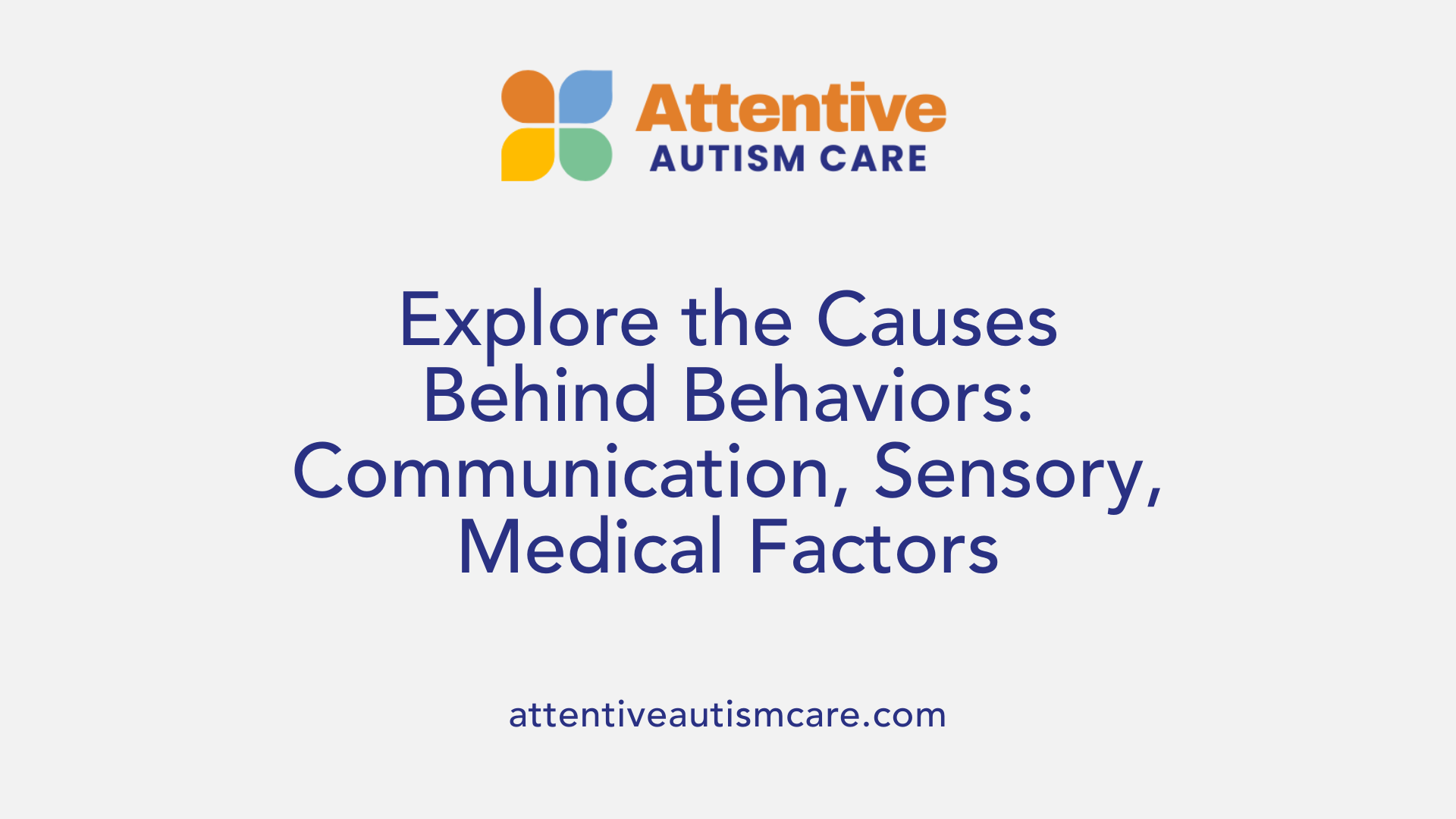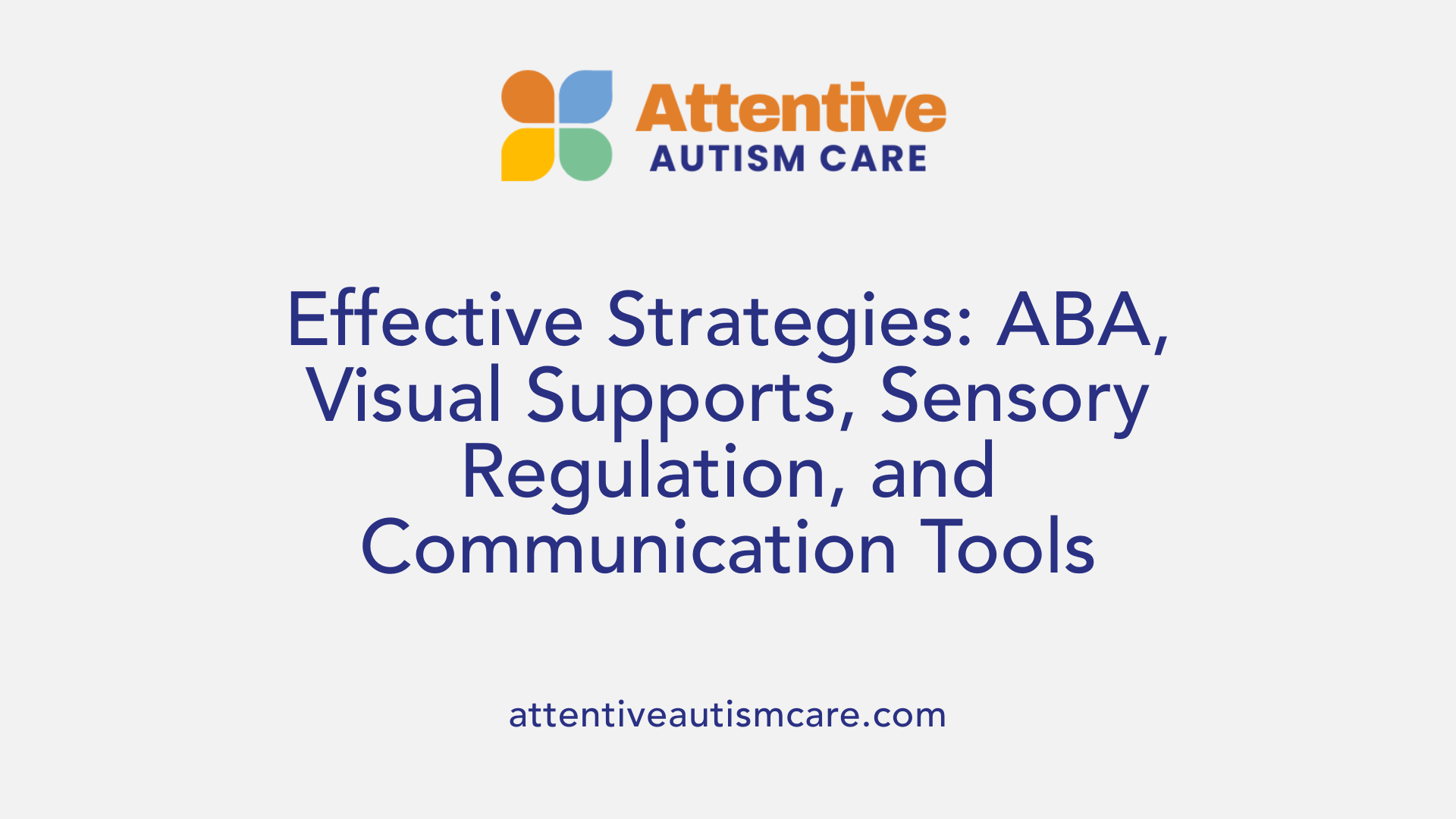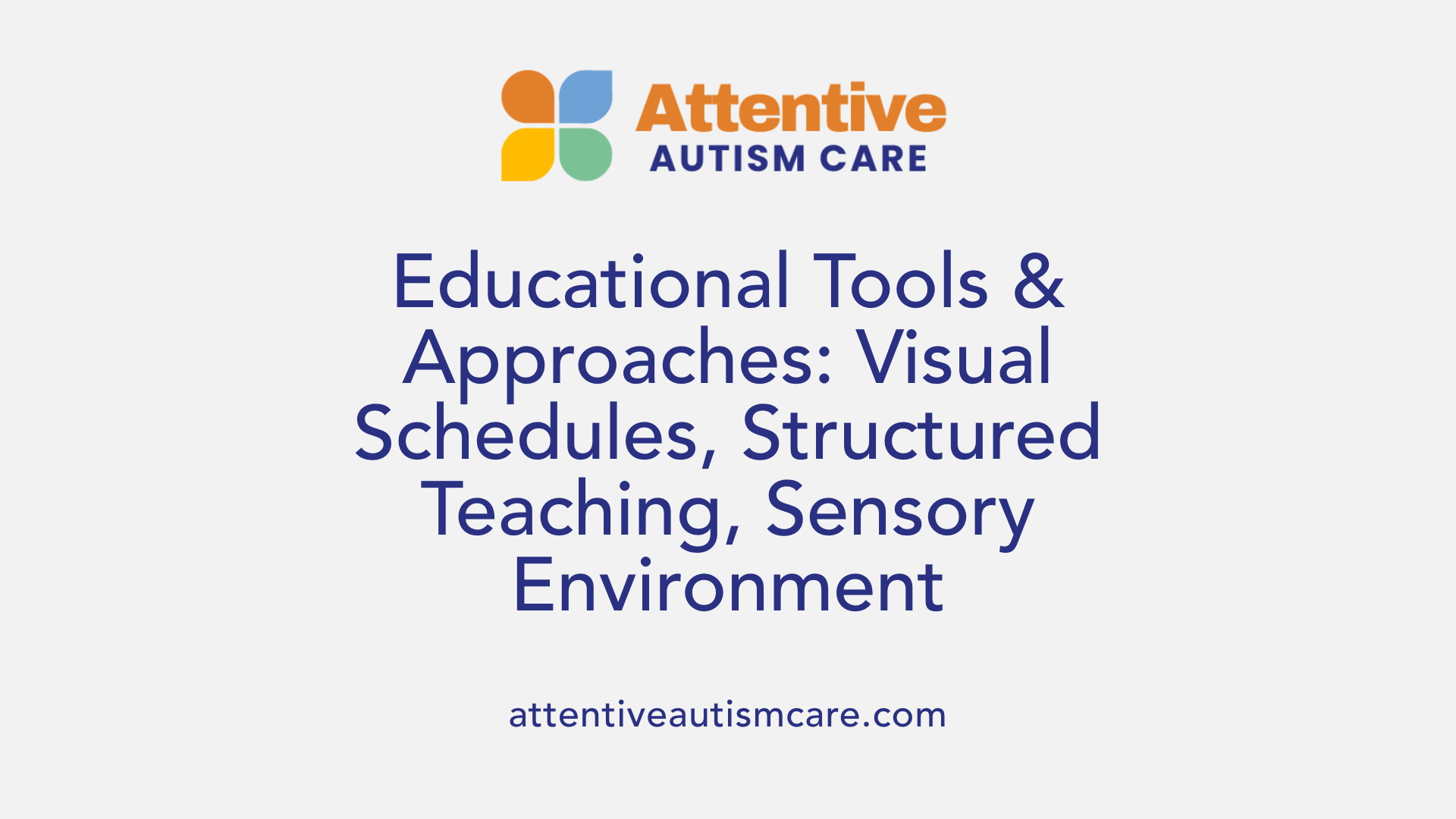Challenging Autism Behavior Problems
Navigating the Complex Landscape of Autism-Related Behavior Challenges

Understanding and Addressing Autism Spectrum Disorder Behaviors
Challenging behaviors in individuals with autism spectrum disorder (ASD), such as aggression, self-injury, and tantrums, pose significant challenges for caregivers, educators, and healthcare professionals. These behaviors, often persistent over time, can impact the individual's quality of life and safety, as well as those around them. A nuanced understanding of the underlying causes, developmental trajectories, and effective intervention strategies is essential for fostering meaningful support and positive outcomes.
Common Challenging Behaviors in Autism Spectrum Disorder

What are common challenging behaviors associated with autism spectrum disorder (ASD)?
Autism Spectrum Disorder (ASD) is often accompanied by a variety of challenging behaviors that can significantly impact individuals’ daily lives and their interactions with caregivers, teachers, and peers. Some of the most commonly observed behaviors include self-injury (SIB), aggression, property destruction, tantrums, stereotypy (repetitive behaviors or stimming), and sensory-related issues.
Self-injury behaviors, such as head banging, hitting oneself, or biting, are prevalent in many individuals with ASD. Over 40% of individuals on the spectrum engage in both aggression and SIB. These behaviors can be a way to communicate distress, manage overwhelming sensory input, or release pent-up emotions. Although these behaviors are often persistent, effective strategies like behavioral analysis and positive reinforcement can help reduce their frequency.
Aggressive behaviors—such as hitting, kicking, or biting—are also common. For children and teens, physical aggression occurs in over half of the population and can pose safety concerns for both the individual and their caregivers. Aggression may spike due to discomfort, frustration, or unmet needs, especially when communication abilities are limited.
Property destruction, including breaking objects or throwing items, is another frequently observed behavior. This action might be a response to sensory overload or an attempt to communicate dissatisfaction.
Tantrums and meltdowns are typical reactions to overwhelming stimuli, changes in routine, or difficulty expressing needs. These episodes can involve crying, shouting, flailing, or collapsing and are often triggered by fatigue, hunger, or frustration.
Stereotypy and repetitive behaviors—often called stimming—are characteristic features of ASD. Stimming behaviors include hand-flapping, rocking, repetitive sounds, or repeating words or phrases. While usually harmless and serving to self-regulate, these behaviors can become disruptive in certain settings.
Sensory-related issues are also prominent. Some individuals have hyper-responsiveness, leading to heightened sensitivities to sounds, light, textures, or smells. Others may be hypo-responsive, showing reduced awareness of internal bodily states or external stimuli. These sensory differences can lead to behaviors aimed at seeking or avoiding specific sensations.
Challenging behaviors often serve functions such as seeking attention, escaping from difficult tasks, seeking sensory input, or expressing discomfort or frustration. Understanding these underlying motivations is crucial for effective management.
Interventions tailored to the individual’s needs—like Applied Behavioral Analysis (ABA), visual supports, or sensory integration strategies—are often employed to address these behaviors. These approaches involve functional behavior assessments (FBA) to identify triggers and develop positive behavior support plans.
Persistence is common, with some behaviors continuing into adulthood if not properly addressed. Severe challenging behaviors can increase as children grow larger and stronger, posing safety risks and affecting quality of life.
Overall, recognizing the specific challenging behaviors associated with ASD and understanding their functions can significantly improve intervention outcomes and support individuals in leading more manageable and fulfilling lives.
Underlying Causes of Challenging Behaviors

What are the underlying causes of challenging behaviors in autism spectrum disorder?
Challenging behaviors in autism spectrum disorder (ASD) are often linked to a complex web of internal and external factors that make it difficult for individuals to communicate their needs or discomfort effectively. Understanding these underlying causes is crucial for developing targeted and compassionate intervention strategies.
One of the main contributors is communication difficulties. Many individuals with ASD find it hard to express feelings or request help, leading to frustration that may manifest as aggression, self-injury, or meltdowns. When verbal communication is limited, behaviors often serve as alternative ways to signal distress.
Sensory sensitivities and overload are also common. Some individuals experience hyper-responsiveness, where even minor sensory stimuli — like loud noises, bright lights, or certain textures — can cause overwhelming sensations. Conversely, others may be hypo-responsive, lacking awareness of internal states or sensory input, which can result in seeking excessive stimuli or ignoring discomfort.
Emotional regulation challenges are central to many challenging behaviors. Difficulties in managing emotions, particularly anger, anxiety, or frustration, can lead to outbursts. For example, co-occurring conditions like anxiety and ADHD are frequent in ASD and can exacerbate emotional dysregulation.
Medical comorbidities such as pain, sleep disturbances, gastrointestinal issues, allergies, or other health problems frequently act as triggers. When discomfort from medical issues is unaddressed, individuals might exhibit behaviors like hitting or head-banging. For instance, constipation or ear infections can cause persistent unease, escalating behavioral responses.
A significant internal factor is impairments in interoception, which refers to the ability to perceive internal bodily sensations. Some individuals with ASD have hyper-sensitive interoception, leading to heightened internal discomfort, while others have hypo-responsive interoception, resulting in a reduced perception of internal distress. When internal cues are missed or misunderstood, behaviors like agitation or self-injury can increase.
External environmental factors greatly influence behavior. Changes in routine, unstructured settings, or unfamiliar environments can upset individuals with ASD. These situations may cause confusion, fear, or sensory overload, prompting challenging behaviors as a coping mechanism.
Finally, psychiatric conditions such as anxiety or attention-deficit/hyperactivity disorder (ADHD) are common co-occurrences and can intensify the likelihood and severity of challenging behaviors. Anxiety, in particular, can manifest as irritability or avoidance behaviors, especially when the individual faces unpredictable or stressful situations.
In summary, challenging behaviors in ASD stem from a dynamic interplay between communication hurdles, sensory and emotional processing, medical health status, internal awareness, environmental context, and co-occurring psychiatric conditions. Careful assessment of these factors allows caregivers and professionals to develop comprehensive interventions aimed at reducing distress and improving quality of life.
Strategies for Managing and Intervening in Autism Behaviors

What are effective strategies for managing and intervening with challenging behaviors in individuals with autism?
Managing challenging behaviors in individuals with autism requires a well-rounded, personalized approach that combines several strategies grounded in behavioral science. The goal is to understand the underlying causes of behaviors such as aggression, self-injury, or meltdowns and address them proactively.
One cornerstone of intervention is behavioral techniques like Applied Behavior Analysis (ABA). ABA involves breaking down skills into small, manageable steps and reinforcing positive behaviors while reducing problematic ones. Functional Communication Training (FCT) is another effective tool, teaching individuals to express their needs and feelings through appropriate means, thereby reducing frustration-driven behaviors.
Environmental adjustments play a vital role. Creating a predictable routine with visual supports, such as schedules and social stories, helps individuals anticipate changes and reduces anxiety. Using visual cues can also guide behavior, alerting about upcoming transitions or needed actions.
Supporting sensory regulation is equally important. Many individuals with autism are either hyper-responsive or hypo-responsive to sensory stimuli. Sensory regulation techniques include the use of calming tools like weighted blankets, noise-canceling headphones, or sensory-friendly spaces where they can self-soothe.
Communication support methods like Augmentative and Alternative Communication (AAC) devices—such as picture exchange systems and communication boards—offer essential tools for individuals who struggle with verbal expression. Enhancing communication reduces frustration and can decrease challenging behaviors.
Positive reinforcement systems are highly effective. Rewarding desired behaviors with praise, tokens, or privileges encourages their recurrence. Establishing consistent reinforcement schedules helps establish routines and motivates compliance.
Routine and structure provide stability. Consistent daily schedules and clear rules help individuals understand expectations and reduce uncertainty, which often triggers challenging behaviors.
Teaching coping skills and self-calming strategies is another critical element. Techniques such as deep breathing, using sensory objects, or engaging in specific activities like swinging or bouncing on a trampoline help individuals manage their emotions and regain control.
In summary, an integrated approach combining behavioral therapies, environmental adaptations, sensory supports, communication enhancements, positive reinforcement, routine planning, and self-regulation skills offers the best chance for reducing problematic behaviors and promoting a higher quality of life for individuals with autism.
Educational Resources and Approaches for Autism Behavior Management

What educational approaches and resources can help in understanding and managing autism behaviors?
Supporting individuals with autism in managing challenging behaviors involves adopting various educational strategies tailored to their unique needs. Visual supports and schedules are fundamental tools that enhance predictability and understanding. These include visual charts, picture schedules, and cue cards that help individuals anticipate daily activities and transitions, reducing anxiety and behavioral outbursts.
Structured teaching methods, such as the TEACCH program, focus on organizing the environment and tasks visually to facilitate independence and task completion. These approaches emphasize consistent routines, workspace organization, and visual cues that make expectations clear.
Behavioral strategies grounded in evidence, like Applied Behavioral Analysis (ABA), social stories, and positive reinforcement, are frequently employed. ABA involves systematically reinforcing desired behaviors while reducing problematic ones. Social stories help teach social norms and appropriate responses through short, personalized stories that individuals can relate to.
Creating a sensory-friendly environment is crucial, as sensory sensitivities can trigger distress and challenging behaviors. Modifications include providing quiet spaces, sensory toys, weighted blankets, or noise-canceling headphones to help individuals regulate their responses to sensory input.
Involving peers and caregivers in intervention plans promotes social understanding and skill development. Peer-mediated programs encourage positive interactions, fostering acceptance and social growth. Caregiver training and involvement ensure strategies are consistent across home and educational settings.
Promoting independence and social skills also involves tailored activities that align with individual interests. Using interests as a basis for learning, such as involving preferred toys or topics, increases engagement and motivation.
Overall, a combination of visual supports, structured teaching, behavioral techniques, sensory accommodations, and collaborative efforts creates a comprehensive framework to understand and manage behaviors effectively. These methods contribute to reducing distress, promoting skill development, and improving quality of life for individuals with autism.
Evidence-Based Treatment and Long-Term Outcomes
What evidence-based treatment options are available for addressing challenging behaviors in autism?
Many individuals on the autism spectrum display challenging behaviors such as aggression, self-injury, tantrums, and meltdowns, which can significantly impact their quality of life and that of their caregivers. To address these complexities, several evidence-based interventions have been developed and validated.
Applied Behavior Analysis (ABA) is a cornerstone treatment widely recognized for its effectiveness. ABA employs reinforcement strategies to encourage positive behaviors and extinction techniques to reduce problematic ones. This structured approach allows tailored interventions based on each individual's specific needs.
Functional Communication Training (FCT) is another proven method. It focuses on teaching individuals alternative ways to express their needs and emotions, thereby reducing behaviors driven by frustration or communication difficulties. For example, teaching the use of picture communication boards or sign language can replace aggressive outbursts.
Prevention strategies are integral to ongoing management. Visual supports, such as daily schedules, timers, and choice boards, help prepare individuals for changes and transitions, effectively reducing anxiety and occurrences of distress behaviors.
Replacement behaviors are taught to help individuals cope better with their environment. This includes teaching relaxation techniques, social skills, and adaptive daily living skills. Developmental approaches like the Early Start Denver Model (ESDM) promote social engagement and communication through play-based activities.
Speech-language therapies—including the use of Picture Exchange Communication System (PECS)—further assist in improving expressive communication, which is often a core challenge contributing to challenging behaviors.
Parental involvement is crucial. Parent-mediated interventions and training programs empower families to implement strategies consistently and effectively across settings. This family-centered approach enhances the sustainability of behavioral improvements.
Comprehensive assessments—both behavioral and medical—are essential to personalize interventions. Regular evaluation helps identify underlying medical issues like infections, allergies, or gastrointestinal problems that may elevate behavioral challenges.
Medication options are sometimes employed, especially when behaviors are severe and unresponsive to behavioral strategies. Medications such as Risperidone and Aripiprazole have been shown to reduce irritability and aggression. Nonetheless, medication use is carefully monitored to balance benefits and side effects.
Longitudinal studies demonstrate that behavioral challenges can diminish over time with appropriate interventions. Some research indicates a small but significant decline in challenging behaviors as individuals age, although persistent behaviors can remain lifelong for some.
In summary, a multidisciplinary approach combining behavioral therapies, developmental strategies, family engagement, and medical management provides the most effective support for reducing challenging behaviors in autism.
| Treatment Type | Main Focus | Methods & Goals | Evidence Level |
|---|---|---|---|
| ABA | Behavior modification | Reinforcement, extinction | Strong |
| FCT | Communication skills | Alternative communication | Well established |
| Developmental (ESDM) | Social skills, play | Play-based learning | Supported |
| Speech Therapy | Expression & comprehension | PECS, sign language | Supported |
| Parental Training | Consistency in intervention | Skill coaching, coaching sessions | Essential |
| Medical Management | Underlying health issues | Medications if needed | Complementary |
A comprehensive, tailored treatment plan involving these strategies can significantly improve behavioral outcomes and overall quality of life for individuals with autism.
For further insights, search terms like "Evidence-based treatment for autism behavioral challenges" can provide access to current research and detailed guides to implementing these interventions effectively.
Developmental Trajectories and Future Directions in Autism Behavior Management
How do challenging behaviors in autism typically develop and change over time?
Challenging behaviors in autism often emerge early in life. This includes issues such as aggression, self-injurious actions, intense tantrums, or shutdowns. Initially, these behaviors can be responses to sensory overload, communication difficulties, or medical discomforts like pain or fatigue.
As children with autism grow, their behaviors may change. With effective early intervention—such as Applied Behavioral Analysis (ABA), naturalistic developmental behavioral interventions (NDBI), and family-centered strategies—many problematic behaviors reduce in frequency and severity. Early support helps children develop social, communication, and coping skills that can mitigate challenging responses.
Developmental progress plays a vital role in behavior changes. For example, improvements in language abilities can decrease frustration-driven behaviors, while better sleep and medical management can lower irritability and aggression.
Most children see some level of positive change over time, especially if tailored interventions are available and consistently applied. Many individuals show decreased aggression, self-injurious behaviors, and tantrums as they mature, particularly with ongoing behavioral therapy and medication support where appropriate.
However, some behaviors may persist or re-emerge in response to new stressors, changes in routine, or worsening medical conditions. For example, as children grow larger and stronger, aggressive behaviors can become more dangerous, posing safety risks. Conversely, some behaviors like stimming might become more refined or serve different self-regulatory functions into adolescence and adulthood.
Overall, the course of challenging behaviors in autism is dynamic. Changes depend on individual development, interventions, environmental consistency, and support systems. Long-term strategies aim to adapt to these evolving needs, emphasizing early diagnosis and sustained, personalized interventions.
What do longitudinal studies reveal about the progression of challenging behaviors?
Research tracking individuals over time indicates a gradual overall decline in challenging behaviors for many individuals with autism. A systematic review of 56 longitudinal studies highlighted that scores on behavioral problem measures tend to decrease, albeit modestly, across different age groups.
Interestingly, the extent of behavioral improvement is influenced by factors such as length of follow-up and the age at baseline. Longer follow-up periods tend to show greater reductions, possibly reflecting the natural course of development complemented by intervention effects.
The decline in behaviors like aggression or self-injury often correlates with gains in communication skills, social understanding, and medical health. Nevertheless, a significant subset—roughly 44%—continue to exhibit self-injurious behaviors even a decade later. This persistence underscores the importance of ongoing support.
Studies indicate that behavioral trajectories are complex. Some individuals may experience a plateau or fluctuation in symptoms, particularly during periods of transition, such as adolescence or adulthood.
Tracking these behaviors longitudinally helps clinicians, caregivers, and researchers understand patterns and identify critical periods where intervention may have the greatest impact.
How do interventions and support systems influence behavioral trajectories?
Behavioral treatments, medication management, and multidisciplinary support systems have profound impacts on the progression of challenging behaviors.
Interventions like ABA and social skills training aim to teach alternative behaviors and communication methods, which can significantly reduce aggression, self-injury, and tantrums.
Medical treatments addressing medical comorbidities—such as allergies, GERD, sleep disturbances, and gastrointestinal issues—can alleviate internal discomforts that often serve as triggers for problem behaviors.
Support systems that ensure consistency across home, school, and community environments bolster behavioral improvements. For example, visual supports, social stories, and structured routines help individuals understand expectations and reduce anxiety.
Caregivers trained in behavior management techniques can respond more effectively, preventing escalation and promoting positive behaviors.
Furthermore, early and sustained intervention increases the likelihood of long-term behavioral improvement, emphasizing the importance of access to specialized services.
What emerging research and technological innovations offer prospects for predicting and managing behaviors?
Advances in data science, such as machine learning and predictive analytics, are opening new avenues for understanding challenging behaviors. Recent studies have employed models that analyze environmental, medical, sleep, and even lunar cycle data to forecast behavioral episodes.
For instance, some models incorporate gastrointestinal health data—since GI issues are linked to behavior issues—and sleep patterns, which are known to influence irritability and aggression.
These predictive tools aim to enable caregivers and professionals to anticipate challenging episodes, plan interventions proactively, and tailor support in real time.
Emerging research highlights the potential of wearable sensors, environmental monitoring, and digital diaries to gather continuous data. This information feeds into algorithms that learn each individual’s unique triggers and behavioral signatures.
Although still in developmental stages, these innovations promise to enhance personalized care, improve safety, and reduce the burden of behavioral difficulties across the lifespan.
How do behavioral needs evolve as individuals with autism age?
As individuals with autism transition through different life stages, their behavioral challenges may shift in nature and intensity.
In childhood, behaviors like tantrums and meltdowns are often rooted in communication struggles and sensory sensitivities. As they grow older, these can evolve into difficulties related to social interactions, executive functioning, or coping with changes.
Adolescents and adults may experience increased anxiety, mood instability, or new challenges related to independence and employment. Some behaviors, like repetitive routines and stimulation-seeking, often persist into adulthood.
Additionally, the capacity for self-awareness and emotional regulation typically improves over time with appropriate support, making crisis management and behavioral strategies more effective.
However, ongoing medical issues such as sleep disturbances, gastrointestinal problems, or psychiatric comorbidities can influence behavior at any age.
Supporting this evolving landscape requires adaptable interventions, continuous medical care, and social inclusion efforts tailored to the individual's developmental stage and life circumstances.
Long-term, a focus on enhancing quality of life and functional independence remains central, with behavioral support evolving to meet changing cognitive, emotional, and social needs.
Supporting Individuals with Autism Through Behavior Challenges
Understanding the multifaceted nature of challenging behaviors in autism spectrum disorder is essential for developing effective, compassionate interventions. Combining medical, behavioral, and educational strategies tailored to individual needs can significantly improve quality of life. Continued research, such as longitudinal studies and innovative predictive models, informs better support systems, helping individuals with autism manage their behaviors more effectively across their lifespan. Engaging families, caregivers, and multidisciplinary teams remains vital in fostering supportive environments that promote growth, independence, and well-being for individuals with autism.
References
- Understanding Challenging Behaviors in Autism Spectrum Disorder
- Behavior challenges | Autism Speaks
- Challenging Behaviors - Kennedy Krieger Institute
- Distressed behaviour - a guide for all audiences
- How to help with your autistic child's behaviour - NHS
- Editorial - Challenging behaviors in adults with autism
- Challenging behaviour: autistic children and teenagers
- Longitudinal studies of challenging behaviours in autistic children ...
- Managing Difficult Behavior in Autism: All You Need to Know




































































































